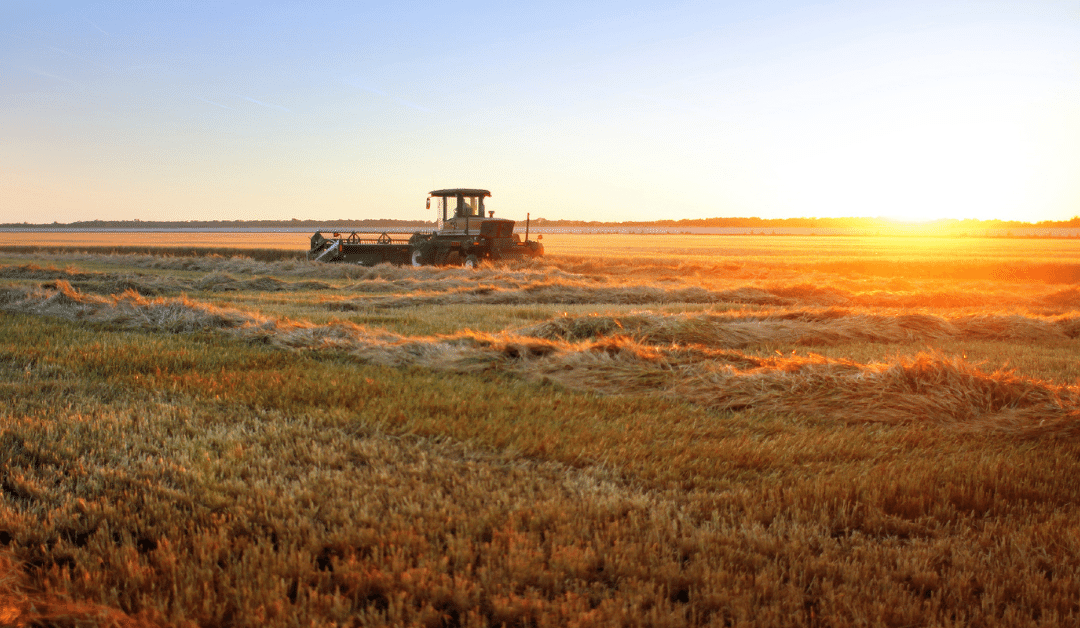Listen to the podcast here.
Download a PDF version of the transcript here.
Colleen Sklar: Welcome to Creative Resolutions In-Action podcast that dives into the real world of Manitoba with a mixture smart conversation, expert advice, behind the scene stories, and straight talk from leaders in government, business, industry, academia and civil civil society. Creative Resolutions In-Action: Manitobans Building Strong Communities.
Colleen: Well good morning Chris, and thank you for coming down to the Winnipeg Metro offi ce to have a conversation with us about Metro region planning, and strategic infrastructure investment. And really I wanted to pick your brain a bit about some of the projects that we’ve been working on collaboratively over the the years around strategic infrastructure investment and the importance of transportation. And I just wanted to talk to you a bit about the Metro Region Growth Plan and what that means, and how that all fits together with strategic investment. What your thoughts on that?
Chris Lorenc: Well I think if we do it right this should be an exciting time and it should be legacy see line drawing time, in the sense that if we’re going to compete regionally, nationally, continentally, or globally, we have to set the table. And for that to happen Manitoba has to lead; it has to have the partnership of the Metropolitan Region municipalities; it has to create the investment environment. And that does that in part by ensuring that we are competitive from a tax perspective; that we have a well planned and maintained, and strategically investment-based infrastructure that supports trade, and welcomes investment from outside the province in particular. And we have a business approval process that doesn’t make it impossible for the absence of certainty as it relates to ‘if I apply I when will I know what the decision is.’
So it’s an important time for Manitoba. It’s an important time for the Capital Region, and it’s an important opportunity for us to really create a bed upon which we can establish new jobs and investment.
Colleen: You know you’ve been at this a long time – I think since 1991 – you’ve been with Manitoba Heavy Construction Association. And before that you had a long history in politics, and you’re a city councillor think for eight or twelve – [nine years], and you’re a city counselor for nine years. What are some of the changes you’ve seen in these same last twenty five years and why do you think now might be an opportunity to actually get this done?
Chris: I think for the first time there’s reason to be reasonably optimistic that there is a willingness is to separate clutter from substance. And that historically it’s been the clutter of silo thinking of constituency-priority-issues-only to the detriment of the broader bigger picture that has prevented Manitoba achieving what what it has yet to achieve.
So I think the separation of clutter substance is something that is emerging. What what I hope emerges is a disciplined, purpose driven, vision embracing direction by the province – in real not just spoken. partnership with the Winnipeg Metropolitan Region.
The eighteen municipalities are really the key to the engine of Manitoba’s economic growth and her opportunities. And I hope that that is something that is recognized by the current provincial government. That the WMR municipalities realize the pivotal role that they play, and that we embrace the concept of “Let’s together grow Manitoba.”
Colleen: So Chris. You’re also one of the founding directors on the board of CenterPort Canada. And can you just tell us a little bit about why is CenterPort Canada important for a growing Metro Region and why should be keeping an eye on this
Chris: I’m going to paraphrase Perrin Beatty because that’s a really good question. Perrin Beatty said “There’s the infrastructure we want (like parks and recreation), the infrastructure we need (like healthcare and education), and then there’s the infrastructure that pays for it and that is trade infrastructure.
Manitoba historically has been a trade and transportation hub. We lost a little bit of that luster. We lost a lot of that position for a variety of reasons that are historical in nature. However we now have the opportunity of reinvigorating and reinvesting and reengineering our place in our country, our place in the continent, and our place in the world. And CenterPort is that ticket now.
For those who say it’s not important and hasn’t hasn’t been embraced by the private sector, I simply point out to the 700 million plus dollars already invested in the CenterPort footprint, mostly lead by companies and investment entities from outside Manitoba, and from outside Canada, who believe in the motto that CenterPort stands for: Better, cheaper, faster global trade. Better, cheaper, faster domestic trade. Better, cheaper, faster continental trade.
And all of that spells jobs and growth. CenterPort is the lynch pin investment – a legacy investment that can, and will, transform who we are as a province in our country, on the continent, and in the world.
00:05:09 – 00:10:05
Colleen: Okay Chris. Although CenterPort is located in two of the Metro Region Municipalities, can you just tell me a little bit about how that benefits the entire region?
Chris: Well without a magnet that attracts investment we have nothing. So it really wouldn’t matter that we have a Capital Region or don’t have a Capital Region.
The magnet that is investing, that is attracting the investment is CenterPort because where it is geographically located. It happens to straddle the borders of two municipalities, but from my perspective that’s irrelevant.
What is relevant is that we have trade transportation investments. What’s relevant is we have all three class one rails intersecting the footprint. What’s relevant is that we are proximate to the global market, proximate to the US market, that we can be one of Canada’s global trade gateways.
If you look at western Canada we should be harnessing Churchill, CenterPort in Manitoba, and in British Columbia Prince Rupert and Delta Port as Canada’s four global trade gateways to ensure that western Canada, as a trade corporation, provides the kinds of of investment opportunities and careers / jobs that we aspire to. And Manitoba is a linchpin to that being possible.
Colleen: And although a lot of the activity that is happening in and around the CenterPort area, there has to be spin-off benefits to the other municipalities. If we’re gonna work regionally, the benefits are shared by everyone.
Chris: Well and those benefits are already beginning to materialize. We have shared water services. We will have the extension of sewer and water into the west lands of CenterPort. We will have have investment in trade enabling infrastructure that straddles not Just Rosser and Winnipeg, but other of the surrounding municipalities.
It enables the reality of transportation moving people to jobs and products to market. It enables the reality of jobs. It enables the reality of careers, and enables the reality of a certain and enhanced standard of living.
Colleen: And those people live all over the region. They work all over the region. There’s businesses that rely on the trade and manufacturing and the hub that’s created at CenterPort to have their businesses across the Metro region and beyond.
Chris: The Agriculture sector is not based just in the Capital Region. It’s all over the province. But it needs facilities that can receive and export to market the products that our ag sector grows. Again that’s a role that CenterPort can discharge, and can discharge effectively. Again: Better, Faster, Cheaper. And that’s good for all of us.
Colleen: Excellent. Well thank you, Chris. We really appreciate the support of Manitoba Heavy throughout the years and we’ll look for your continued involvement and engagement as we begin to move this plant forward.
Chris: You’ll have it.
Colleen: What do you think’s at stake if we don’t do this?
Chris: Well. Our our social and our economic wealth, our ability took provide careers and opportunities for our kids and their kids. Basically our quality of life and standard of living is what’s at stake. We have the geography. We have the location. We have the necessary inputs to become a global trading partner and player. But it’s really dependent on us. Are we prepared to make the necessary decisions? Are we prepared to shape and execute on a vision and on a mandate that warms up to the notion that investment is good? Foreign investment is excellent – that all of that combined creates an expanded and in hand standard of living and quality of life in a fantastic province.
Colleen: So Chris do you have one piece of advice that you might give Metro Region Mayors and Reeves as they begin to envision in how they’re going to execute this collaborative regional plan?
Chris: I think probably the most diffi cult challenge, and at the same time it should be an easy decision, is to lose the notion of silo thinking. It is so important to embrace a partnership. It is so important to embrace a vision. It is so important to understand that the market will decide where it wishes to invest, but without that investment none of our silo priorities at will ever come to reality. So it’s the broader vision., the broader good, the broader picture, that we need to paint and be disciplined to its purposes.
Colleen: Chris you know even tasked to create a regional land use servicing and infrastructure prioritization strategy or plan for the Metro Region. And you know we are going to need all hands on deck for this. We’re going to need to be working with our private partners. We’re gonna be working with industry industry associations and I’m just wondering like how do you see Manitoba Heavy construction supporting and helping us move this plan forward?
00:10:05 – 00:12:25
Chris: Well we’ve helped world champion the development of a strategic trade infrastructure approach for the Capital Region. I have the privilege of chairing that committee. So whether it’s in that capacity,
or participating on advisory, or steering committees that are supportive of “Let’s Grow Manitoba,” we’re in with both feet.
Colleen: And I know you’ve been working on this for a a long time. I think we’re going to be having more conversations in the future as we move on, and we’re going to be picking your brain a little bit more on certain areas as the plan begins to unfold.
As a kind of closing comment, we’ve been asking all of our guests: If they could talk to any one person in the world sit down and talk to them who that one person be for you.
Chris: It’s a really interesting question. He’s not alive but I would have loved had an opportunity to speak with Nelson Mandela. For a variety of human rights and social reasons. From a visionary perspective I’d love to speak to Bill Gates. And from a just general worldly smarts perspective, I would really appreciate an opportunity with Barack Obama and Bill Clinton.
Colleen: Wow that would be quite a, a powerhouse table. If you could get them altogether.
Chris: It sure would.
Colleen: Well thank you so much Chris. We really appreciate you being part of our little podcast and really, we’re really hoping to get the voices of all of our community leaders, and all of those people that really drive our community towards brighter futures. So thank you.
Chris: You know we should all embrace Let’s Grow Manitoba.
Colleen: Thank you so much. And thank you all for joining us on Creative Resolutions In-Action. If you enjoyed this episode please be sure to check out episode to where we sit down with Lanny McInnis from the Manitoba Home Builders and talk about what the development communities hopes and fears are, when we move towards this coordinated approach to land use infrastructure investment in the Winnipeg Metropolitan Region.
Join us next week for episode 4 where we talk with Robert Sanford from the United Nations University Institute, the Water Environment and Health, where we talk about the impact of a changing climate on our water and in particular Lake Winnipeg, Creative Resolutions In-Action: Manitobans Building Strong Communities.





0 Comments